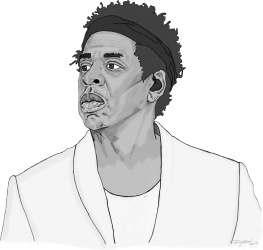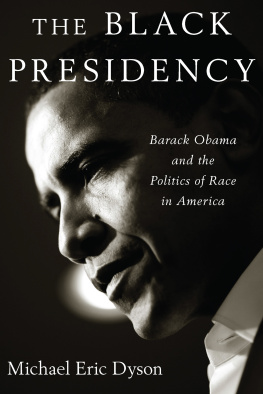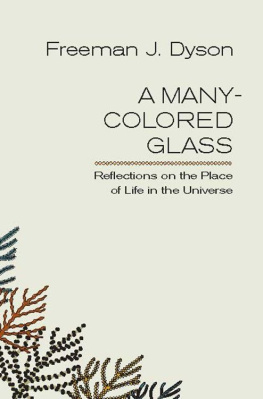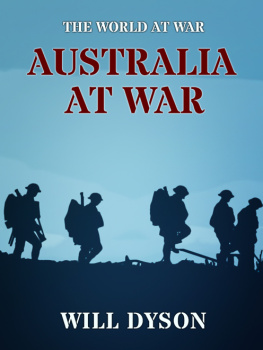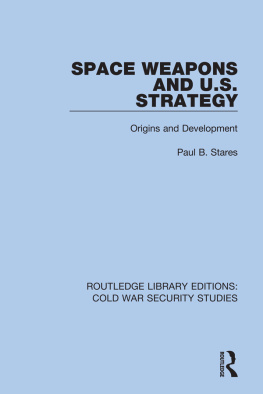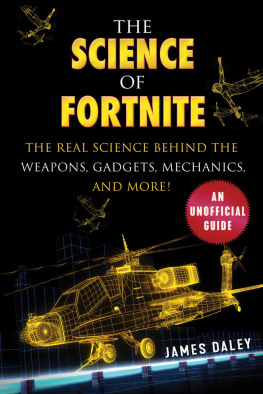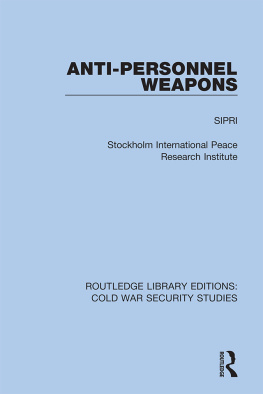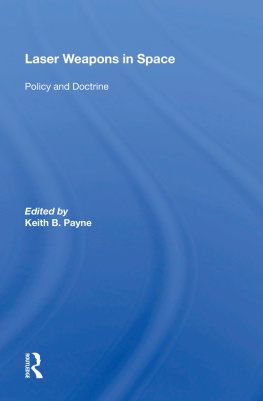Dyson - From Eros to Gaia
Here you can read online Dyson - From Eros to Gaia full text of the book (entire story) in english for free. Download pdf and epub, get meaning, cover and reviews about this ebook. City: New York, year: 1992, publisher: Knopf Doubleday Publishing Group;Pantheon Books, genre: Art. Description of the work, (preface) as well as reviews are available. Best literature library LitArk.com created for fans of good reading and offers a wide selection of genres:
Romance novel
Science fiction
Adventure
Detective
Science
History
Home and family
Prose
Art
Politics
Computer
Non-fiction
Religion
Business
Children
Humor
Choose a favorite category and find really read worthwhile books. Enjoy immersion in the world of imagination, feel the emotions of the characters or learn something new for yourself, make an fascinating discovery.

From Eros to Gaia: summary, description and annotation
We offer to read an annotation, description, summary or preface (depends on what the author of the book "From Eros to Gaia" wrote himself). If you haven't found the necessary information about the book — write in the comments, we will try to find it.
From Eros to Gaia — read online for free the complete book (whole text) full work
Below is the text of the book, divided by pages. System saving the place of the last page read, allows you to conveniently read the book "From Eros to Gaia" online for free, without having to search again every time where you left off. Put a bookmark, and you can go to the page where you finished reading at any time.
Font size:
Interval:
Bookmark:
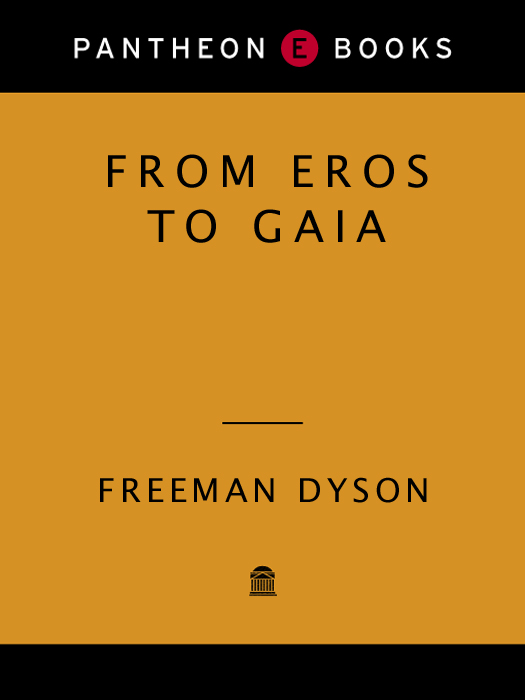
A LSO BY F REEMAN D YSON
Disturbing the Universe
Weapons and Hope
Infinite in All Directions
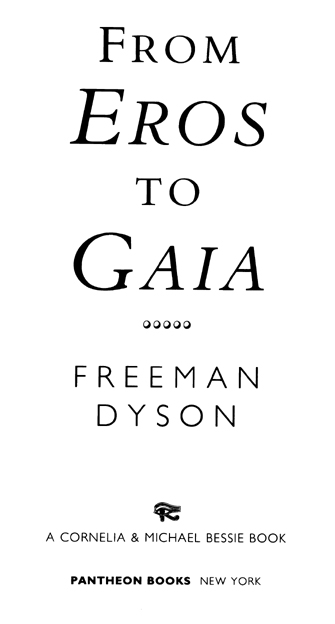

Copyright 1992 by Freeman Dyson
All rights reserved under International and Pan-American Copyright Conventions. Published in the United States by Pantheon Books, a division of Random House, Inc., New York, and simultaneously in Canada by Random House of Canada Limited, Toronto.
Information regarding previously published essays may be found in the Bibliographical Notes section, beginning on .
Library of Congress Cataloging-in-Publication Data
Dyson, Freeman, J.
From Eros to Gaia / Freeman Dyson.
p. cm.
A Cornelia & Michael Bessie book.
Includes bibliographical references.
0-679-41307-3
1. Science. 2 Scientists. 3. Physics. 4. Physicists.
5. Astronomy. I. Title.
Q158.5.D97 1992
500dc 20 9150889
eISBN: 978-0-307-83102-6
v3.1
The world of science and the world of literature have much in common. Each is an international club, helping to tie mankind together across barriers of nationality, race, and language. I have been doubly lucky, being accepted as a member of both. As a scientist, I have professional friends and colleagues, people I know and feel at home with, in thirty countries around the Earth. As a writer, I have pen friends, people who write me eloquent and personal letters, spread over an equally wide range. It is wonderful to discover that, in this age which is supposed to be dominated by television and computers, people still read books and write letters.
My mother used to say that life begins at forty. That was her age when she had her first baby. I say, on the contrary, that life begins at fifty-five, the age at which I published my first book. So long as you have courage and a sense of humor, it is never too late to start life afresh. A book is in many ways like a baby. While you are writing, it is curled up in your belly. You cannot get a clear view of it. As soon as it is born, it goes out into the world and develops a character of its own. Like a daughter coming home from school, it surprises you with unexpected flashes of wisdom. The same thing happens with scientific theories. You sit quietly gestating them, for nine months or whatever the required time may be, and then one day they are out on their own, not belonging to you anymore but to the whole community of scientists. Whatever it is that you producea baby, a book, or a theoryit is a piece of the magic of creation. You are producing something that you do not fully understand. As you watch it grow, it becomes part of a larger world, and fits itself into a larger design than you imagined. You belong to the company of those medieval craftsmen who added a carved stone here or a piece of scaffolding there, and together built Chartres Cathedral.
I was born in 1923 in Crowthorne, a village in the south of England without pretensions to scientific fame. My parents interests were artistic and literary rather than scientific. My mother was a lawyer, my father a musician. Our only connection with professional science was Sir Frank Dyson, who held the exalted position of Astronomer Royal. Sir Frank was not related to us, but he came from the same part of Yorkshire as my father. We were proud to share his name. His glory helped to turn my infant thoughts toward astronomy.
When my mother died at the age of ninety-four, I found among her papers a long-forgotten manuscript, an unfinished novel with the title Sir Phillip Robertss Erolunar Collision, which she had preserved among the relics of my childhood. I wrote it at the age of nine. My hero Sir Phillip is clearly based on Sir Frank Dyson, the literary style is borrowed from Jules Vernes story From the Earth to the Moon and a Trip Around It, and the theme of a collision between the asteroid Eros and the Moon must have been suggested by the close approach of Eros to the Earth in the year 1931. The Eros encounter was in fact an important opportunity for the professional astronomers of that era, who used it to obtain an accurate determination of the distance between the Earth and the Sun. It is likely that Sir Frank was involved in organizing the observation and analysis of Eross movement across the sky. In 1931 he was not only Astronomer Royal but also President of the International Astronomical Union. No doubt, as a seven-year-old, I heard his activities discussed daily by my elders at the breakfast table. In my story Sir Phillip successfully predicts the Erolunar collision by calculating the orbit of Eros ten years in advance, and then organizes an expedition to the Moon to observe the event in detail, just as Sir Frank had organized the expeditions to Africa and Brazil to test Einsteins theory of general relativity by measuring the bending of light by the Suns gravity during the solar eclipse of 1919. Unfortunately, the narrative stops abruptly before Sir Phillips expedition has left Earth. When I rediscovered this fragment forty-two years later, I was amused to see how little I had changed. I was a writer long before I became a scientist. And I was always in love with spaceships. In all my writing, the aim is to open windows, to let the experts inside the temple of science see out, and to let the ordinary citizens outside see in.
. At the instigation of my editors, Cornelia and Michael Bessie, I decided to incorporate the Danz Lectures into an anthology of other nontechnical writings, published and unpublished, extending over six decades from 1933 to 1990.
The title From Eros to Gaia defines the beginning and the end. By a happy coincidence, the names of two Greek gods have become attached to two astronomical objects, the errant minor planet Eros and the fertile life-giving mother-planet Earth. Eros is the god of youthful passion, Gaia the goddess of motherhood and of caring for all lifes creatures. Eros is a swift-moving and potentially destructive hunk of rock; Gaia is the guardian of trees and fish and bacteria and humans. The pilgrimage from Eros to Gaia is a good metaphor for the life of a writer, beginning with a joyful fantasy of interplanetary fireworks and ending with a serene fantasy of green leaves and peaceful death.
I included the juvenile Eros fragment in this book with some hesitation, knowing that it is vastly inferior as a work of literature to the incomparable classic The Young Visiters, written by the nine-year-old Daisy Ashford. Ashford wrote a complete novel, with a sophistication of plot and characterization far beyond my reach. My fragment is not presented here as a rival to Ashfords novel, but merely as evidence of how the world of science appeared to an attentive nine-year-old in the 1930s. Two features of the narrative strike me now as noteworthy. First, the chief character, who is supposed to be a professional astronomer, spends his time fund-raising and doing calculations at his desk, rather than observing the sky. Second, the driving force of a scientific project is institutional self-aggrandizement rather than intellectual curiosity. These two insights show that the practice of science has changed less than one might have expected between 1933 and 1991.
The concluding Gaia story was written for an anthology with the title Living Philosophies, edited by Clifton Fadiman and published in 1990. I am grateful to Doubleday for permission to reprint it here. Between Eros and Gaia come thirty-three other pieces classified in six categories: Stories, Things, Institutions, Politics, Books, and People. The pieces within each section are arranged chronologically. Stories, beginning with Eros and the Danz Lectures, are mainly anecdotal history. Things are expository popular-science articles, mostly written for
Font size:
Interval:
Bookmark:
Similar books «From Eros to Gaia»
Look at similar books to From Eros to Gaia. We have selected literature similar in name and meaning in the hope of providing readers with more options to find new, interesting, not yet read works.
Discussion, reviews of the book From Eros to Gaia and just readers' own opinions. Leave your comments, write what you think about the work, its meaning or the main characters. Specify what exactly you liked and what you didn't like, and why you think so.

